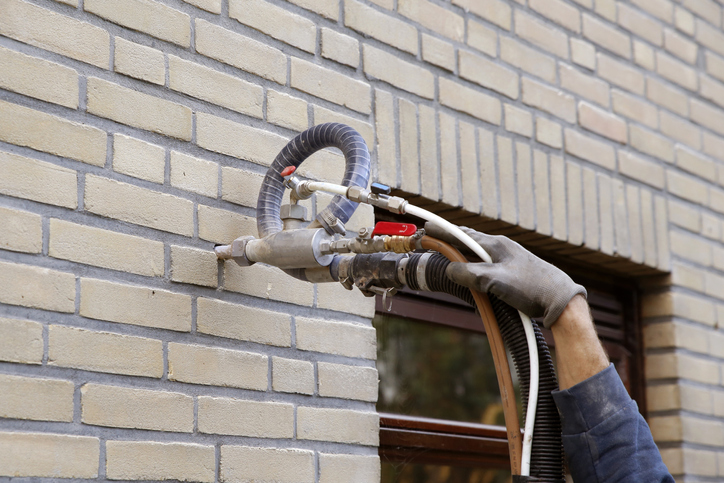Building Regulations Part D
Reading time: 5 minutes
What is Building Regulations Approved Document D?
Part D of the Building Regulations (or Approved Document D) relates to cavity wall insulation, and gives advice and instructions on how to put a barrier in to stop toxic fumes from harming people who use the building. As some cavity insulation uses urea formaldehyde foam (which was heavily used in the 70s and 80s) the proper health and safety guidance must be followed to stop harmful fumes from entering into any areas of the building where people will be.
Approved Document D states:
-
D1: ‘If insulating material is inserted into a cavity wall, reasonable precautions shall be taken to prevent the subsequent permeation of any toxic fumes from that material into any part of the building occupied by people.’
The Building Regulations Part D applies to both dwellings (homes) and non dwellings, and covers all new builds, repairs or renovations using cavity wall insulation in England - as well as excepted energy buildings in Wales.
When were the Part D Building Regulations published? Have there been any updates?
The latest version of Approved Document D was updated in 2013, and incorporates the changes to the 2012, 2002 and the original 1992 edition. There were no major updates to Part D Schedule 1, but the regulation numbers were updated. In previous versions, there have been updates to materials and workmanship, as seen in the current 2013 version.
What is considered toxic material?
Some cavity wall insulating and adhesive materials contain urea formaldehyde (UF) foam and can give off toxic formaldehyde fumes as it degrades, which can cause breathing problems, skin irritation and can lead to serious health issues. The material being used must be checked whether it’s suitable by following BS 8208-1:1985. UF is also known as urea-methanal. It is allowed to be used, as long as a barrier is put in to stop the fumes from entering the building, and if the person using it has a current Certificate of Registration of Assessed Capability.
Asbestos insulation is also considered toxic, and this is covered in separate legislation. Asbestos use for thermal insulation was banned in 1986.
How can you stop toxic fumes from entering into the building?
To meet part D1 of the Building Regs, a technical solution to stop chemical fumes from penetrating the building must be used:
The following rules also apply:
-
The suitability of the foam must be assessed
-
The material must meet BS 8208-1:1985
-
Installation must meet BS 8208-1:1985
-
An appropriate registered installer must carry out the work following the latest health and safety laws, using the correct PPE
What buildings are exempt from building regulations?
The Building Regulations apply to all new builds and most extensions, conversions or change-of-use projects. Building Regulations Part D however applies to all construction projects using cavity insulation and must be followed.
Do I need planning permission for cavity wall insulation?
Generally, cavity wall insulation on most existing buildings does not normally need planning permission, where there is no change in the building’s appearance. However, planning permission will be needed for new builds, extensions and for listed buildings or those in a conservation area. In all cases though the Part D Building Regulations must be followed. You can find more information on all the current Building Regulations on our dedicated Travis Perkins Building Regs hub.
Disclaimer: Information displayed in this article is correct at the time of publication, but note that legislation changes periodically. Please refer to the latest publication of each approved article. The information contained on this page is intended as an overall introduction and is not intended as advice from a professional building control officer. The definition of ‘building work’ and when Building Regs approval is required is set out here. Travis Perkins aims to avoid, but accepts no liability, in the case that any information stated is out of date. Always consult the approved local authority building control team when considering any exemptions, and before undertaking any work.





